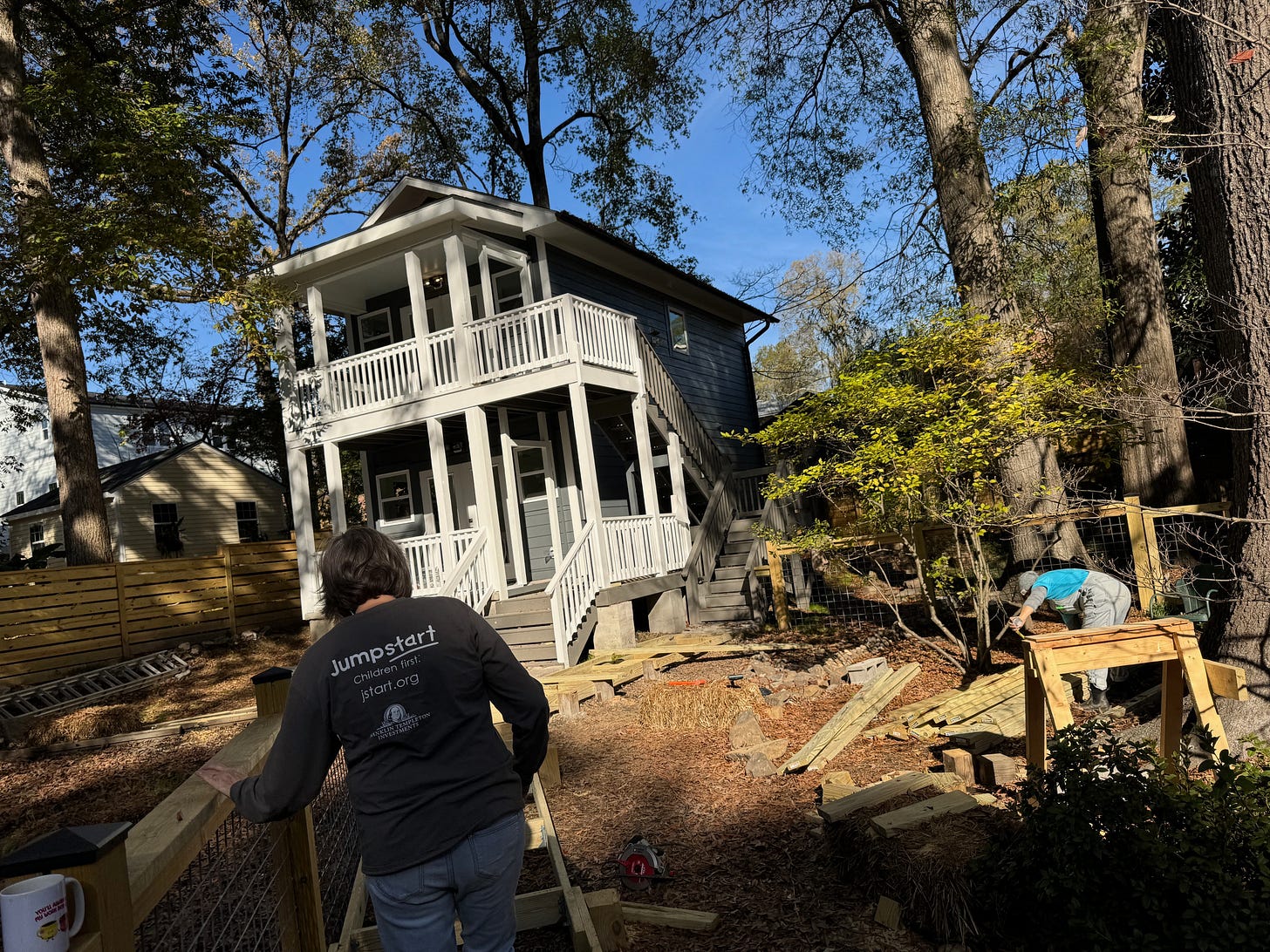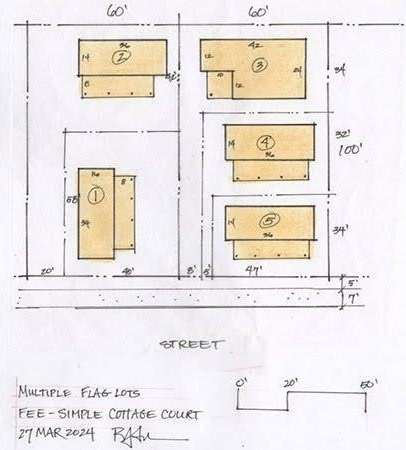The Anderson Test
Let's start grading cities on how serious they are about housing affordability
John Anderson, a notable voice in New Urbanism and curator of the Neighborhood Development Facebook group, has become a driving force behind discussions on zoning reform.
In 2023, he outlined the top “Ten code reform priorities for the housing crisis,” a list that covers the lowest-hanging fruit in housing policy reform. These priorities provide a simple, actionable framework for policymakers and urban planners looking to assess how effectively their cities are responding to failures in their housing markets.
Below, I’ll summarize Anderson's top ten priorities and then apply these principles to Durham, one of the national leaders in zoning reform, to see how the city stacks up.
Grading Durham’s Zoning Reform Efforts
To gauge Durham’s progress, I’ve applied these ten priorities to our zoning reforms using a simple binary grading system—each policy either meets the mark (1 point) or doesn’t (0 points).
Let’s break down the score:
Eliminate minimum off-street parking (✅): Durham has made progress here. You no longer have to provide off-street parking, but if you do, then you become vulnerable to other problematic requirements, e.g., no parking allowed in front of your home. Forcing parking into spaces that do not make sense (because of trees, topography accessory structures, etc.) degrades projects. On flag lots, in particular, it limits the number of houses you can fit. I have also seen the parking requirements force people to remove beautiful trees. (Still, the spirit of parking reform is here, so I’m giving it a point.)
Allow ADUs as-of-right (✅): Durham is probably the best city in the country for ADUs. We have not only legalized backyard housing; we have recently expanded citizens’ options for how to build them. They can be as large as 1200sf. Notably, Durham is one of the few cities in the country to allow duplex ADUs and faith institutions can now build an unlimited number.
Adjust building codes for small units (✅): In 2023, the State of North Carolina enacted reforms to allow up to four units under the International 1-2 Family Residential Code (IRC). With this simpler and more affordable code, the reform should have a massive impact on small-scale development.
Remove redundant zoning rules (❌): Durham’s revolutionary small lot code now allows for 1200sf maximum homes on 2000sf maximum lots, a reform that effectively rebooted the starter home market. While lot minimums were reduced, they still exist, which severely hampers housing choice. Because they discriminate against re-subdivision for more fee-simple starter homes, I am not granting a point.
Exempt ADUs from density limits (✅): Since 2006, Durham has exempted ADUs from density limits.
Reasonable Limits on ADU size (✅): ADUs in Durham can now be built up to 1200sf, so long as they do not exceed the size of the primary dwelling. This is one of the more flexible ADU codes in the country.
Remove covered parking requirements (✅): The city has no requirement for covered parking. Off-street parking requirements were eliminated in 2023.
Allow flag lots (✅): Durham has long had flag lots but recently legalized small flag lots, a crucial reform for maximizing underutilized land and increasing housing stock.
Base fees on square footage, not units (❌): Durham’s fee structure is driven by the number of units, not the total square footage of the building. This can be tricky to explain, so here is a good example. Take a 4000 sf mansion home. Durham now charges progressive permitting fees based on the size of the home, so a 4000 sf home will create more fees than a 1000 sf home. However, if the property owner wants to make the 4000 sf mansion home 4 (or 8) mansion flat apartments, they will still be penalized because the fees per unit remain larger than the fees per square foot. If the goal is affordability and access, the fees should be charged exclusively by square foot, removing the penalty for providing more (smaller) homes. Durham does not do this, so no point is awarded.
Revise exclusionary zoning (✅): In the simplest of terms, “exclusionary zoning” is the ubiquitous presence of single-family-only zoning. Durham eliminated this type of zoning in its urban core in 2019, becoming one of the first cities in the South to do so.
TOTAL SCORE: I give Durham an 8 out of 10.
What Durham’s Score Means
An 8 out of 10 is a solid start, though it translates into a B- grade. While Durham has made major strides in key areas like parking reform, ADUs, and small-unit construction, some of the more nuanced issues—such as minimum lot sizes and fee structures based on square footage—still need work. Given the breadth of the issue, it’s clear that even a city like Durham, a national leader in zoning reform, still has work ahead.
And that's the reality across the country. Zoning reform is complex, and even the most forward-thinking cities have only begun to scratch the surface. A B- grade is far from perfect, but it’s also a reminder of just how challenging the housing crisis truly is. As we continue to push for reforms, let’s be clear-eyed about where we stand—and how much further we need to go.








On this 10-point scale, what would the average US city score?
I bet no more than 3, a failing grade.
I'd be surprised if any cities score more than an 8.